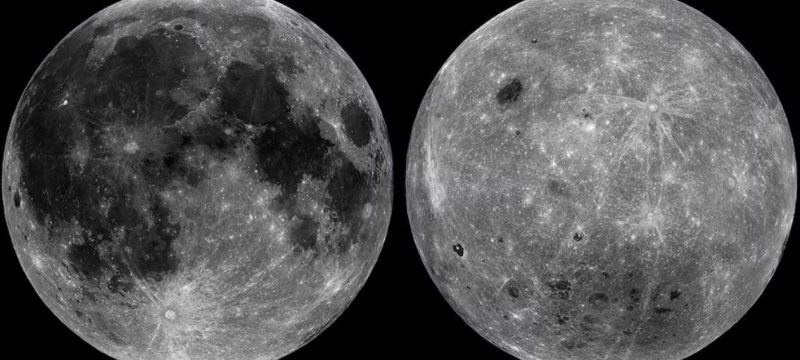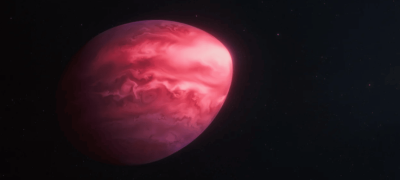A detailed study of the Moon’s gravity, using data from NASA’s twin robotic spacecraft, is shedding new light on why the Moon’s two sides—the near side that always faces Earth and the far side that remains hidden—have such contrasting appearances.
Data from NASA’s Gravity Recovery and Interior Laboratory (GRAIL) mission reveals that the Moon’s internal structure is uneven. This asymmetry is believed to stem from intense volcanic activity on the near side billions of years ago, which significantly shaped its surface features.
Read more: Spanish Company Launches Lunar Navigation System with GPS on the Moon
The research shows that the near side of the Moon experiences slightly more flexing than the far side as it orbits Earth in an elliptical path, a phenomenon known as tidal deformation caused by Earth’s gravity. This indicates differences in the Moon’s interior layers, particularly the mantle—the layer beneath the crust and above the core.
Ryan Park, head of the Solar System Dynamics Group at NASA’s Jet Propulsion Laboratory and lead author of the study published in Nature, explained that the Moon’s interior isn’t uniform. The near side is warmer and more geologically active deep below the surface compared to the far side.
The near side is characterized by vast plains called mare, which formed from molten lava that cooled and solidified long ago. In contrast, the far side is much rougher and mountainous, with fewer plains. Scientists had previously theorized that radioactive, heat-generating elements accumulated in the near side’s mantle due to ancient volcanic activity, which might explain these surface differences. The new study provides the strongest evidence yet supporting this theory.
The researchers estimate that the mantle beneath the near side is about 100 to 200 degrees Celsius (180 to 360 degrees Fahrenheit) hotter on average than the far side. This thermal difference is likely sustained by the radioactive decay of elements like thorium and titanium found in the near side’s mantle.
Park noted, “The near and far sides differ in topography, crust thickness, and heat-producing elements inside the Moon.”
The Moon’s diameter is about 3,475 kilometers (2,160 miles), roughly a quarter of Earth’s size. The mantle, which extends about 35 to 1,400 kilometers (22 to 870 miles) below the surface, makes up nearly 80% of the Moon’s mass and volume. It mainly consists of minerals like olivine and pyroxene, similar to Earth’s mantle.
Co-author Alex Berne, a computational planetary scientist at Caltech, said the asymmetry found in the mantle matches the Moon’s surface geology, such as the uneven distribution of volcanic rock known as mare basalts, which are 3 to 4 billion years old. He added that the processes responsible for ancient volcanism on the Moon may still be active today.
The team spent years analyzing data from the GRAIL spacecraft, Ebb and Flow, which orbited the Moon from December 2011 to December 2012.
Park said, “This study provides the most detailed and accurate gravity map of the Moon ever created.”
He added that this enhanced gravity map is crucial for developing Positioning, Navigation, and Timing (PNT) systems on the Moon, which will be essential for the success of future lunar missions. Better knowledge of the Moon’s gravity field will enable precise navigation and safer operations for spacecraft and astronauts on the surface.
The researchers also suggested that this method of studying a celestial body’s interior using gravity data could be applied to other moons in the solar system, such as Saturn’s Enceladus and Jupiter’s Ganymede, both of which are targets in the search for extraterrestrial life.
Meanwhile, these findings deepen our understanding of Earth’s constant companion.
“The Moon plays a key role in stabilizing Earth’s rotation and generating tides, which affect natural systems and daily life,” said Park. “Although many lunar missions have expanded our knowledge of its surface and interior, questions remain about its deep structure and history. As our closest celestial neighbor, the Moon continues to be a major focus of scientific exploration.”








